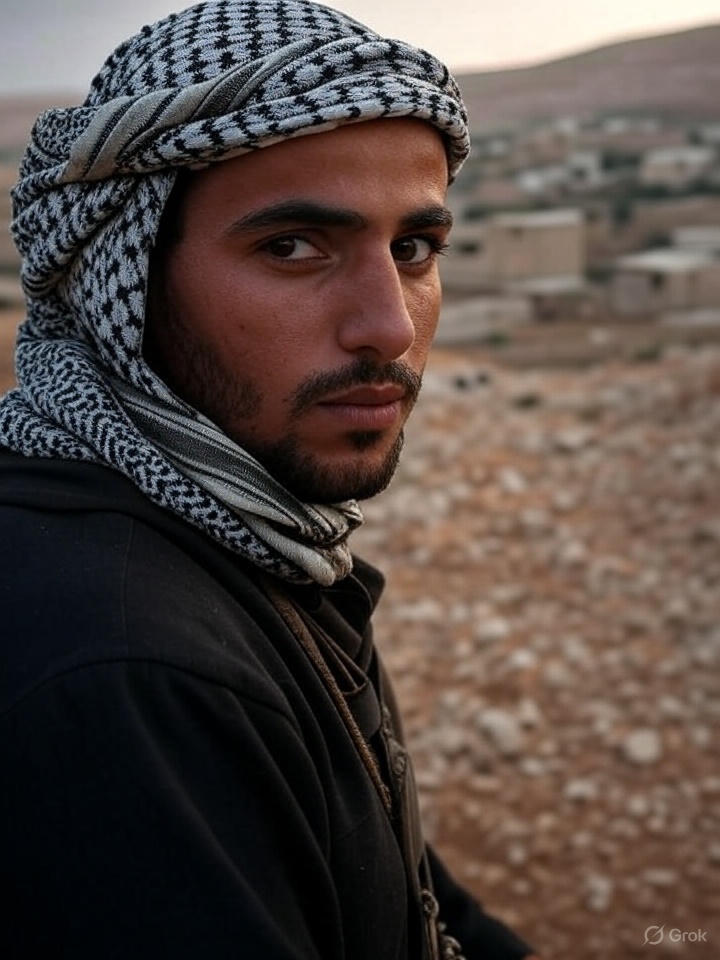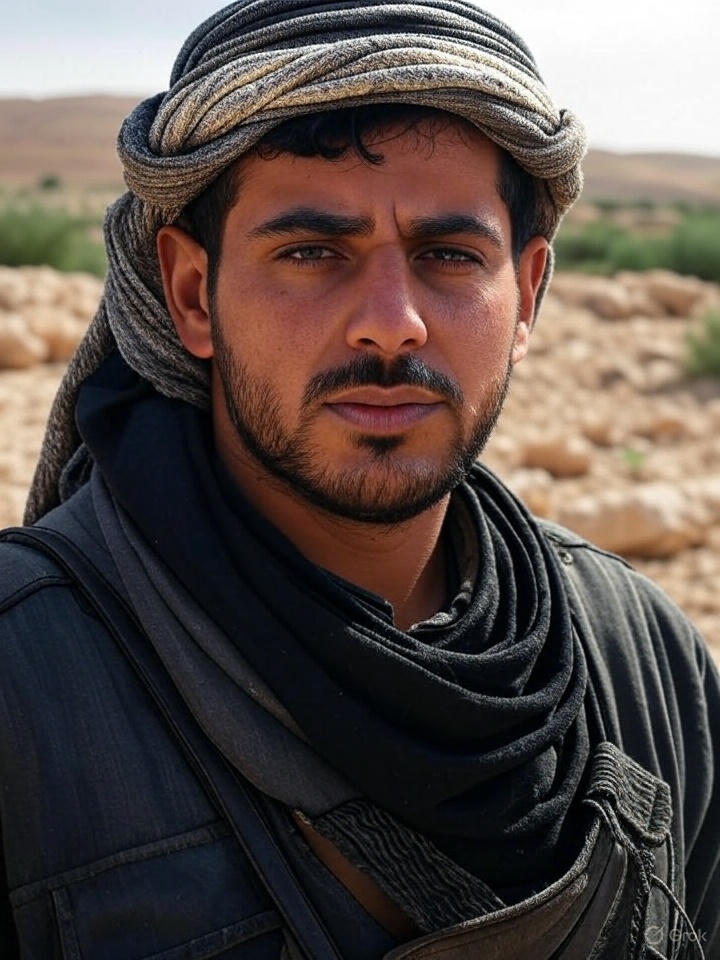In mid-July 2025, the southern Syria village of Mazraa on the outskirts of the Druze-majority city of Sweida became a flashpoint in a wider sectarian and geopolitical crisis. Fighters from Sunni Bedouin tribes clashed violently with local Druze militias, drawing in southern Syria government forces, Israeli airstrikes, and U.S. brokered ceasefire attempts. The photograph captures Bedouin militants circled by smoke and flame, underscoring the severity of the conflict that erupted on July 18.
Background & Origins
The clashes began on 13 July when Bedouin tribes erected checkpoints in eastern Sweida, provoking Druze armed groups. This sparked exchanges of gunfire and mortar fire in rural villages including al-Mazraa, al-Tireh, and al-Soura, and major supply routes like the Damascus–Sweida highway were temporarily cut off (Globedge, AP News, euronews).
Over the following days, the violence escalated as Druze militias and Bedouin fighters entrenched themselves in villages. Both sides suffered casualties. Syrian government checkpoints were attacked, and government forces dispatched reinforcements especially from nearby Daraa to support Bedouin tribes (Wikipedia). The Ministry of Education postponed high-school finals due to safety concerns.
Reports indicate that government-backed Bedouin and security forces were accused of atrocities executions, looting, and burning homes which then provoked retaliatory actions by Druze militias (Wikipedia).
Climax on July 18
By July 18, villages like Mazraa were engulfed in fighting, with shops ablaze and smoke filling the skyline. The AP’s image conveys Bedouin fighters advancing near burning buildings as Druze gunmen engaged them (Los Angeles Times).
Amid the chaos, Bedouin and Druze forces clashed fiercely. The UN estimated up to 80,000 people displaced, while humanitarian access was hindered by raids, kidnappings including that of a White Helmets coordinator and damaged infrastructure (AP News).
As violence persisted, the Syrian Network for Human Rights and the Syrian Observatory for Human Rights reported between 166 and 350 deaths, including civilians, medical staff, and children (AP News).
Regional Ramifications & International Response
Israel responded with airstrikes on Syrian regime facilities in Sweida and Damascus, including the Defense Ministry and presidential palace, citing the protection of the Druze community paralleling earlier strikes in 2024 (The Washington Post, TIME, New York Post).
Washington distanced itself from the strikes but backed diplomatic intervention via envoy Tom Barrack. The U.S. helped broker a ceasefire between Druze and Bedouin factions, also mediated by Turkey and Arab states (Reuters).
Syria’s interim President Ahmed al‑Sharaa interpreted U.S. signals and tacit Israeli dialogue as a green light for government troop involvement but Israel retaliated when regime forces advanced (Reuters).

Ceasefire & Aftermath
15 July saw an initial ceasefire declaration, but sporadic violence and alleged field executions persisted (AP News, AP News).
18–19 July brought intensified negotiations. Israel and Syria agreed to halt hostilities. By 20 July, Bedouin clans announced withdrawal from Sweida City. Government forces also pulled back, allowing humanitarian convoys access (Anchorage Daily News, euronews, Los Angeles Times, Al Jazeera, AP News).
Significance of Mazraa Photo
- Visual proof: The image from Mazraa symbolizes deepening sectarian strife, showing Bedouin fighters in front of a burning village.
- Symbolic front: Mazraa’s positioning on Sweida’s outskirts made it a microcosm of broader Druze–Bedouin confrontation.
- Documenting escalation: The photograph reflects the engagement of both militias and state-linked forces, highlighting how local disputes became militarized.
- Humanitarian cue: Scenes of displacement and burning villages highlighted the need for aid and prompted international ceasefire efforts.
Key Takeaways
- Grassroots conflict: The Druze Bedouin clash started at the local checkpoint level and rapidly spread into wider sectarian warfare.
- State intervention: Syrian government forces intervened under the guise of restoring order, but appeared to support Bedouins, exacerbating Druze resistance.
- Regional escalation: Israeli airstrikes, prompted by Druze appeals and a desire to maintain a demilitarized zone, internationalized the conflict.
- Diplomatic complexity: U.S. brokered ceasefires, Israeli–Syrian indirect coordination, and regional diplomacy temporarily ended major hostilities.
- Human cost: Hundreds killed, massive displacement, and destruction highlight the ongoing fragility in post Assad southern Syria.
Keywords Recap
- Bedouin clans, Druze militias
- Sectarian violence in Sweida province
- Syrian government intervention
- Israeli airstrikes & international diplomacy
- Humanitarian crisis & ceasefire
This photograph is not just a moment in time—it encapsulates a crisis fueled by sectarian grievances, state ambitions, and regional strategic interests. Mazraa’s burning buildings and armed figures serve as a powerful visual reminder of Syria’s ongoing fragility.

